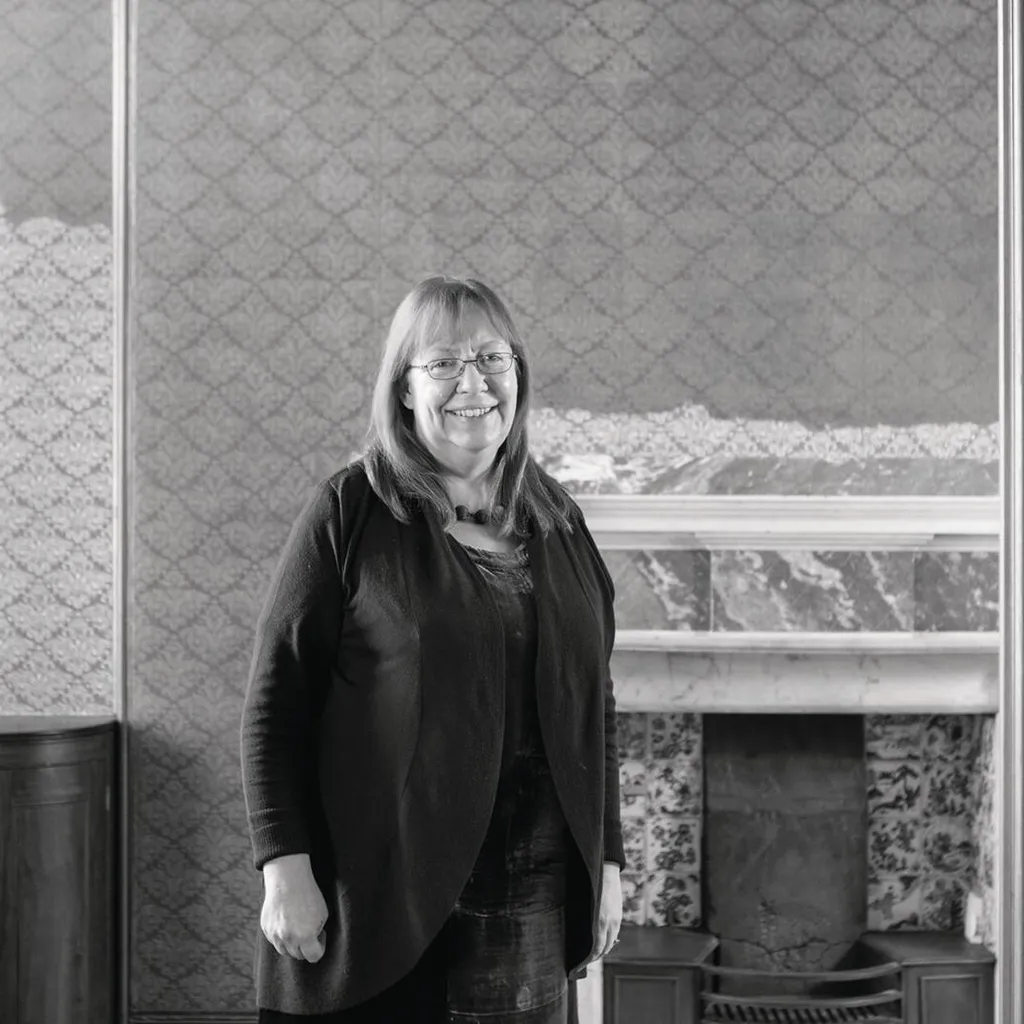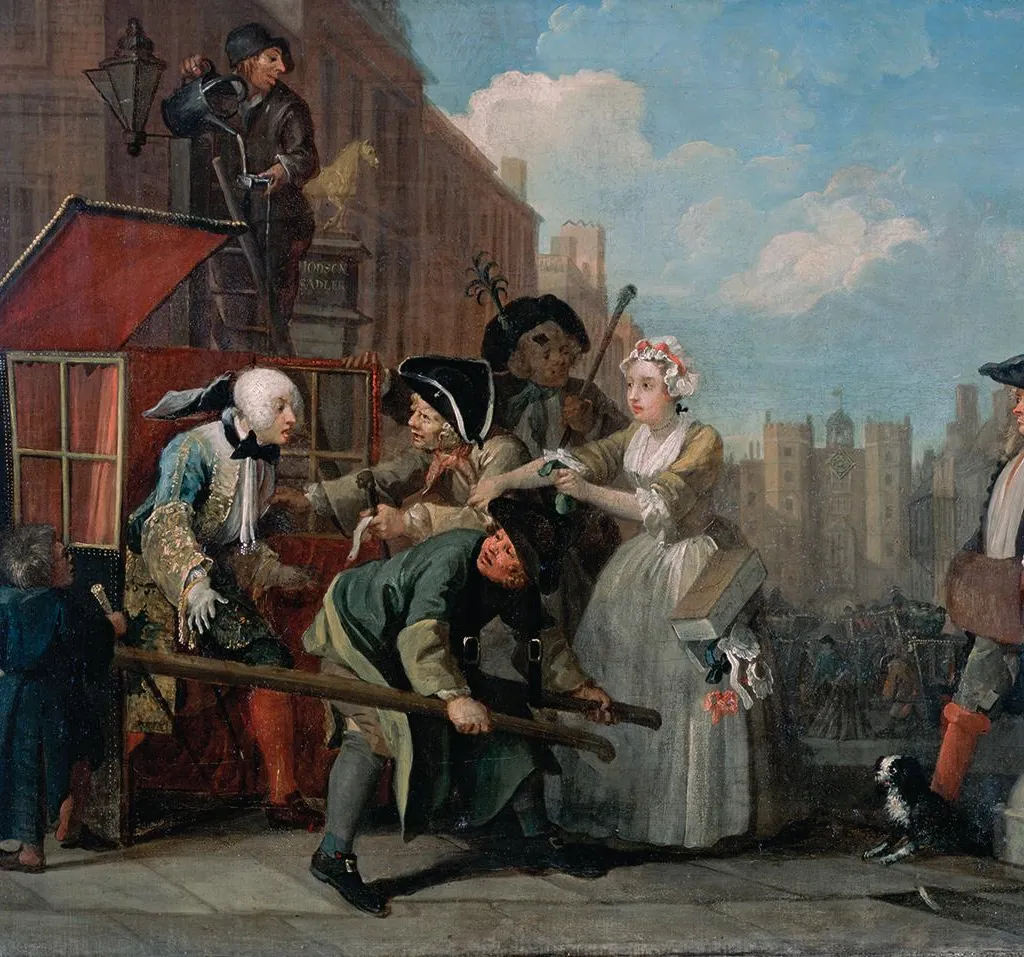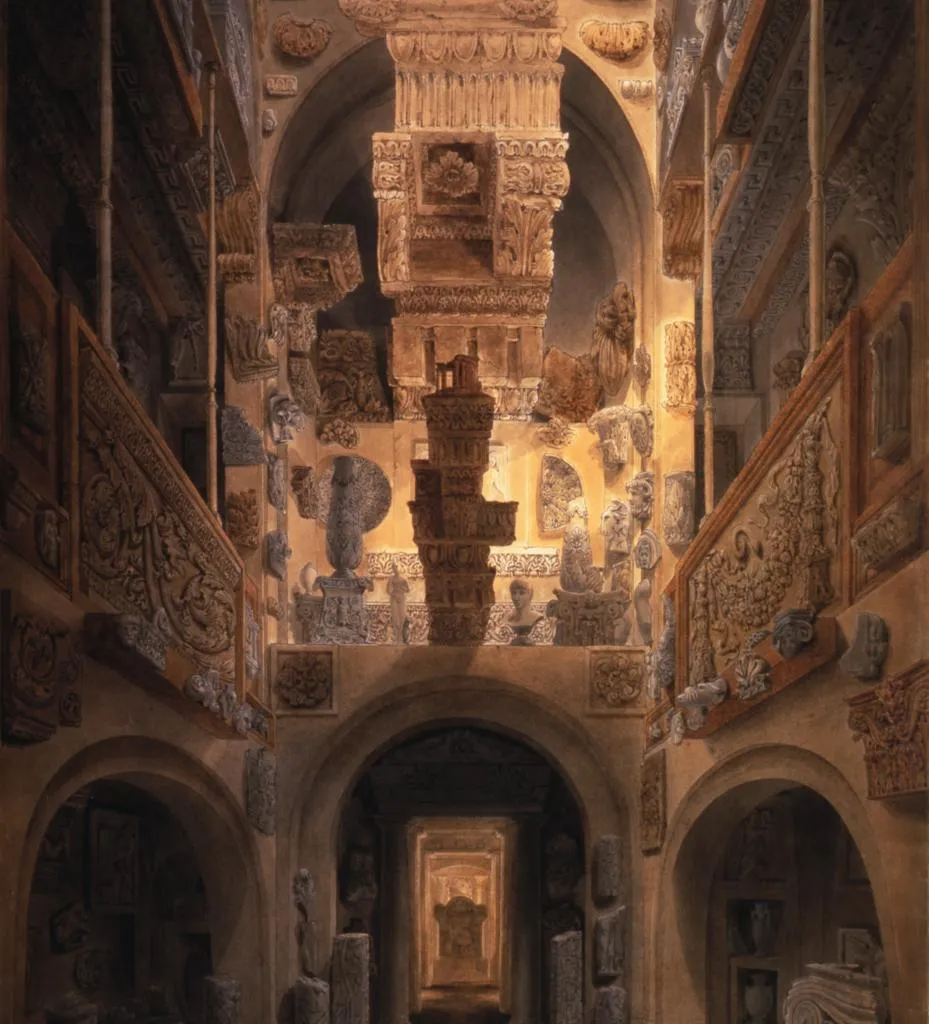What is your role at the Soane Museum?
I joined the Soane in 1986 after completing a History degree at Oxford, and then an MA with the Study Centre for the Fine and Decorative Arts – a course designed for those wanting to work in museums and covering architecture, paintings, sculpture and decorative arts (textiles, porcelain, silver etc).
I was very lucky to get a junior curator’s post when the Soane was given money by government to fund a secretary – a condition of my employment was that I could type, and for the first year I had to do all the administration as well as begin my curatorial career!
I am responsible for building restoration – at the moment we are in the middle of the restoration of Soane’s Drawing Office. Before we could begin I had to do the practical work of packing decades’ worth of items from our building archive, stored in the drawers of the Office. When we rehang all the works of art in the Office in January 2023, they will be in the places assigned to them by John Soane himself.

I try to do something every day that relates to the collection – resolving a query, uploading images or transferring information from paper records to our database, so that the information the public sees online is constantly being enhanced and expanded.
On a typical day I might be working on anything from the museum’s social media feeds, to giving lectures and tours. I’m very fortunate to be able to say that in 35 years at the museum, I have never felt that I didn’t want to come to work in the morning.
What is the most challenging part of your job?
Aside from juggling many responsibilities, the biggest challenge is ensuring that the house and collection are preserved and presented as Sir John Soane left them at his death in 1837 – as required by the original Soane Act of Parliament, passed in 1833. The historic interiors of Soane’s Museum are works of art in their own right, so it isn’t just the collection we have to look after, but a total work of art that has been called the ‘supreme example of a house museum anywhere in the world’.
What can be found at the Soane museum?
I think most visitors have heard that Sir John Soane’s Museum is a ‘hidden gem’ and that it has extraordinary, magical interiors – and that is what they come to see. If they come for something in particular, it’s usually the two series of Hogarth paintings (A Rake’s Progress, which was recently on view in the exhibition ‘Hogarth and Europe’ at Tate Britain, and An Election) or the ancient Egyptian sarcophagus of King Seti I.

Do you have any favourite pieces?
One of my favourite pieces in the collection is a drawing by Joseph Gandy; a view of the Soane by night, from 1811. I love this work because it illustrates the museum at an early stage in its development. My research over the last 30 years proves that this is an extraordinarily accurate record of how the museum looked at this time. By studying this drawing and others, we can track how Soane’s building and displays evolved over time. While not usually on display, the public have been able to see this drawing in our exhibition, ‘Hidden Masterpieces’.

My other favourite is one of the most touching works in the museum – a bust of a plasterer, John Bayley, who worked for Soane on a number of projects in the 1820s, including the restoration of Wotton House after a devastating fire. For me it illustrates Soane’s appreciation of his skilled workmen, reflecting the fact that he was himself a self-made man; the son of a bricklayer.
It is a rare example of a sculpture of the period recording the appearance of an elderly working man, and I love that it was displayed high up in the Colonnade, close to Soane’s Drawing Office, where it will return when the restoration is finished in January 2023.

